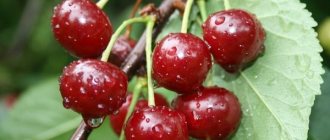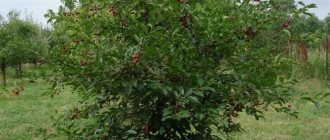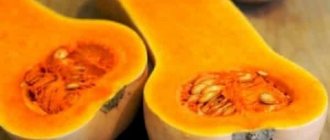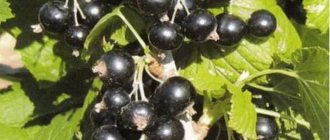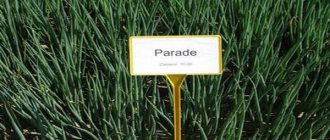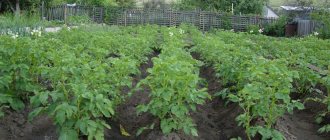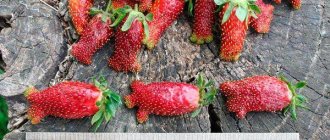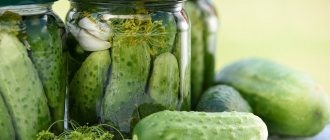History of selection
The Gek variety was bred at the Crimean experimental breeding station. The organizer of the selection work is Eremin Gennady Viktorovich. The variety was registered in 1991 for testing. Included in the register of breeding achievements of the Russian Federation in 1995.
Huck is the result of crossing a winter-hardy, early-fruiting Chinese plum with a hybrid cherry plum Ochlitnitsa. According to other sources, the variety was obtained as a result of breeding work, for which the Kuban Comet cherry plum and common apricot were used.
Forum statistics
208683 Messages in 1636 Topics from 5641 Users. Last user: Cerberus Last message: “Khanka is a raisin table…” ( Today at 01:29:28) Latest messages on the forum.
Now on the forum
44 Guests, 3 Users
Users in the last 15 minutes: leonidych, vlad51, Natasha [Blocked] [Section moderator] [Forum moderator]
Maximum online today: 112 . All-time maximum online: 2758 (28 July 2021, 17:22:51)
Users who visited the forum in the last 24 hours
Total: 316
(Visible: 315, Hidden: 1) 1963, leonidych, vlad51, Natasha, Victor B, Nikolai Lipunov, Nikolai Mikhailovich, sergei, Evgeniy52, 77volt, hanter64, Tatyana B, kosmos, slavalimon, Alexander Vl., Mikhail77, skier, rivaN , y_fed, Kazak, Igor Sergeevich, Victor55, Andrey15, OlgaOs, Ilya 77, DorontsovPeter, Chapai, Buba, Mikhno Alexander, Alexander K, dralexk1, alexsandr, Amber7394, SANYCH, Pioneer, DimaRostov, Dmitry 77, Verona, DED2, MaxL, nicson7, Vasily V., Kenig, Alexander Taganrog, VitalySD, Dmitry-Kozadoev, Realist, Alexey Deminov, Elektronik_t, Galinka, Skif, DSW, Alexey Agryzkov, Taker, Kadyrov, bonami, antar, Sergey 1965, Andrey Gladilin, SvetlanaBondareva, tolya , Nadezhda Grig, Naumov Igor, Igor F., kvg, Pavel 64, Volgar, Capricorn, Roman Fedorovich, igor222, max2008-01, Iv Iv, Vika, Andrey Lis, Evgeniy30, lomakin1969, linalenadavi, gheo55, Sergey Chistokletov, mystic69, Grinya, Cherkessk, Andrey76, DIL, Serzh1978, Haus, , Vladimir-kanevskaya, Iglika, Marina Protasova, Mikhail Alekseevich, Andrey 31, Linx, Morgana, Igor K, Tatyana Rogacheva, Polyanina Ekaterina, Yuri _Saransk, Sergey 61, Armagnac, Alexander48 , tsv, Verbitsky E.I., Lyudmila, Victoria Aleksandrovna, Vladimir Berdnikov, vladimirM, and.drew, Maximilian, Denisovich, Soshnin Yura, Tikhy, Elena Z, Sasha57, Natalia Nikolaevna, Gaivoronsky Yuri, Oleg56, weather forecaster, ElenkaF, Lydia58 , Vyacheslav03, Sa-shura, irahelm, Pitko, Volodya R, Volgogradka, Alexander71, Natalia1968, Valentina Ivanovna, freesia, L.A.P., Lyuda5, Alexey V, dayton, marlin64, Tanyusha, Vasily1111, Yuri 14, Vova Kapran , Dmitry Nikolaevich, Oleg Filippov, Valery Rastorguev, Kalevanych, AlexsandrP, LeXa_KoT, Sergey Yuryev, Inna161, cfibr, stenlly2010, rambo, maxbul, Nadymchanka, Ivan Levin, Eduard., nik2, serginio, potap05, nadia, VeraNiK, Sergey Tashchiyan, G.V., Gardener - amateur, Alexander-ask-34, Vladimir Kostochkin, Wintel, Vyacheslav Vladimirovich, mers, Izhitsa, Ramiz, Akhmed, gardener, P7N, alexss, Zaur, TITOVA LYUBOV, Sergey Ko, Tatyana Volzh, Grandfather Young, pioneer-2, ketch, Bublichenko Alexander M, Ildar, Sergei Vasilevi4, Oleg Ivanovich delivered, Helga, Marshal, Vasily 53, Den, Alexander150, Yavgen3678, vikbublik, Valerie, Henry, Alexander_89, nick041, Svetlana Streletskaya, Antrikan, neposny, yak , 25nata35, Vladimir Buturlakin, Yagodka, Aprel, Antonk1983, PS-URA, spotlight, Nikolay S., Andrey68, Alexander565, Gennady163, AndSanych, Alexander Gay, Alex65, kdm57, oleg9f, zsb, Svetlana Korotina, Dmitry Badaev, Belgorodets, Yura , formula1, Cerberus, 64nikolay64, Yuri Semyonov, YurSanych, Kryn, N.A. Sokolov, TIS, Guram, sem_en, Alexander Smirnov, AlexanderD, Spikina Galina, Anatoly Sivkov, Snezhinets, Alexey Sh., mira567, Mst, victor_, Vadim , Salex, Yuri P., Bison, thanatos, Alexander Sh, Vardan, cecet71, Coltrane, Alexander 61, Andrey Beribesov, Efimych, boltik, Vladimir-27, Vovka, LOZA, ilja, Unter, Gela, Irinka, NatalyaMed, ichtiandr, Sergey Lomonosov, krasnovlad1, Irene, Pirko Alexander, Khramov, YATATYANA, , Vitaly Kholkin, Mihalych., Evgen_Ev, ni, Vladimir Kovba, Rita, nau_63, Yuri72, Lisav, niy1, Timofey, NelyaS, MikhAf, Alexander Zinoviev, Zayac, SNovichek , Tatyana A., VDV, Dmitry-Ivanovich, Evgeny 50, Saisan, slaviking, court, Vladimir Shilov, Oleg Swedes, Sergey2017, Masha_sadovod, Burundukx, Lamo, Oleg A., arnyusha, Leonty Yarygin, Vyacheslav-56, lena, Igor 31, Sergey 31, Zhorzhovich, Tatyana Provorova, nut lover, Enych, turist, Ewgeniy, Ivan Shmelev, atseton, Liza, Elvira2017, yotmast
Description of the variety
Yellow cherry plum Gek is a medium-sized fruit tree. The plant is characterized by a rapid growth rate. The trunk is smooth, of medium thickness. The color of the bark is gray, with a few large lentils.
Annual growth reaches 25 cm
The side shoots are thick - up to 3.5 cm. On young bushes they are directed upwards. The branches acquire a horizontal position as they grow. The shoots have dark, charcoal-colored bark. The average height of the Gek cherry plum is 2.5 m.
The leaves are sinewy, ovoid in shape. Color – bright green. The foliage on the shoots grows abundantly. The crown is spherical and dense. The average length of each leaf is 6-7 cm, width – up to 4.5.
During the flowering period, the tree is covered with two-flowered inflorescences. They grow densely on the shoots. Diameter – up to 2.2 cm. Petal color – white. The flowers have numerous yellow stamens, 2-5 mm long.
In three words about varieties
When purchasing Russian plum seedlings, do not be surprised if you receive an offer to buy cherry plum varieties - this is the name given to this miracle of selection in the State Registers of Russia and Ukraine.
The most common types are the following:
Kuban comet. This type of hybrid is maximally adapted to various growing conditions (it has excellent productivity both at the dacha near St. Petersburg and in the gardens of residents of the Far East). The weak-growing tree has high frost resistance and is relatively tolerant of drought. The weight of the fruit ripening in the first ten days of July is 35-40 grams.
Late comet. Selected from a seedling of the previous specified variety, it ripens a decade later. Other characteristics are similar to the mother tree.
Columnar. This type of cherry plum has a later flowering period. It is distinguished by its original elongated crown, consisting of several skeletal branches and a leader. The mass of dark red fruits with a sweet and sour taste is about 40 grams.
Found. A weak-growing, productive hybrid (up to 50 kilograms of bright sweet and sour fruits ripen on one tree, reaching technical ripeness by mid-August), superior in winter hardiness to the Kuban Comet.
Abundant. Large-fruited (up to 45 grams) light yellow fruits can be harvested as early as July. The bone is easily removed.
Gift to St. Petersburg. Almost completely insensitive to frost. Another specificity of the species is resistance to various pests and diseases. The elongated, wonderfully smelling fruits are collected at the end of August. There is only one minus: the variety needs pollinators, as it is self-sterile.
Traveler. A paradoxical variety: it blooms late and ripens early. Created for gardeners living in central Russia. Fruit weight – 25 grams.
Timiryazevskaya. Medium-sized, self-fertile species with early harvest of medium-weight fruits.
You can learn more about the Russian plum from an experienced breeder:
Characteristics
Gek has a specific set of varietal characteristics. Gardeners definitely need to take these characteristics into account to successfully grow crops.
Drought resistance, winter hardiness
The hybrid variety Gek is resistant to cold. This cherry plum can be grown in Siberia and other regions with an unfavorable climate. However, to obtain a regular and abundant harvest, you will need to follow a number of agrotechnical rules.
The drought resistance of the Gek variety is average. The fruit tree tolerates short-term lack of liquid.
Important! Moisture deficiency is most harmful during fruit formation. Drying out of the soil in the roots can lead to a lack of harvest or premature fall.
Young plants are most sensitive to lack of fluid. Adult specimens tolerate unfavorable conditions better.
Pollinators of cherry plum Gek
The variety is classified as self-sterile. In the absence of pollinators, the plant practically does not bear fruit. This leads to the fact that the ovaries on the plant do not form.
Any varieties of Russian plum or cherry plum are used as pollinators. The only requirement is that their flowering period must coincide with the Gek variety. This ensures a complete exchange of pollen for a subsequent abundant harvest. The Naydena and Puteshestvennitsa varieties are most often used as pollinators.
Flowering period and ripening time
The formation of buds occurs at the end of March. They bloom in early April.
The average flowering period of cherry plum is 2 weeks
Fruit ripening occurs in the second half of July. Fruiting period is up to 1.5 months.
Important! Gek belongs to the early-fruiting varieties. You can collect the first harvest from a tree 2-3 years after planting the seedling.
Tree branches are characterized by high strength and elasticity. Therefore, they do not break under the weight of the fruit.
Productivity, fruiting
The Gek variety is universal. It produces tasty, round-shaped fruits. The average weight of each is 30 g, they have a sweet and sour taste. They have juicy yellow flesh that does not darken in air.
The fruits of the Gek cherry plum have a small seed that is easily separated from the pulp
From one mature tree you can collect up to 45 kg of fruit. On average, 35-40 kg of cherry plum is harvested, subject to the presence of pollinators.
Area of application of fruits
The Gek cherry plum, due to its pleasant taste, is consumed fresh. The fruits are also suitable for canning and various preparations. They make jam, jams, and confitures. Sweet fruits go well with various fruits and berries.
Resistance to diseases and pests
The cherry plum variety Gek is characterized by average resistance to infections. Under unfavorable conditions, violation of cultivation technology, or the presence of an affected plant nearby, the fruit tree is susceptible to disease.
The Gek variety does not show specific resistance to insects. It affects most types of pests that spread on fruit trees.
Advantages and disadvantages
Hybrid cherry plum Gek is superior to other varieties in many ways. Therefore, this fruit crop is in demand among gardeners.
Main advantages:
- high productivity;
- ease of care;
- good taste of fruits;
- frost resistance;
- possibility of cultivation in different regions of the Russian Federation.
Cherry plum Gek is characterized by good adaptive ability. The plant adapts to unfavorable conditions without compromising productivity.
The main disadvantages of the variety:
- sensitivity to disease;
- possibility of pest damage;
- average drought resistance;
- need for pollinators.
The disadvantages of the Gek variety fully compensate for the advantages. Compliance with agricultural technology will allow you to get a good harvest every year without loss.
Care
Regular watering, fertilizing, pruning and prevention of diseases and pests will provide the tree with proper growth, excellent immunity and protection from negative environmental influences.
Pruning cherry plum
Pruning a young cherry plum tree is an important stage of care. Carrying out the correct pruning procedure helps:
- protection and prevention of viral diseases by removing affected areas of the tree;
- formation of a correct and healthy crown;
- ensuring the duration of the life cycle;
- increasing the quantity of yield and quality of fruits.
In the first year after planting, all branches of the seedling must be pruned by 1/3. In subsequent years, the cherry plum tree is pruned for sanitary purposes and to thin out the crown in order to provide sufficient light to the internal branches. All fast-growing growths, upon reaching 1 m in length, must be pruned to 40–50 cm.
The cuts are made with sharp garden pruners or a knife, and the bare areas are treated with garden varnish to prevent the penetration of pathogenic bacteria into the tree.
Top dressing
For good growth and fruiting, the tree needs organic and mineral fertilizers.
If fertilizers have been applied to the planting hole, no additional fertilizing is required for the next 2 years.
Fertilizer application schedule - table
| Fertilizer | Proportions | Deadlines for depositing | Application procedure |
| Organics (humus, compost or manure) | 10 kg per 1 m2 | Autumn, every 2–3 years. | Into the soil when digging. |
| Ammonium nitrate | 70–90 g per 1 m2. | Every year before flowering | Into the soil along the tree trunk. |
|
| June | |
|
| After harvest | |
|
| Three times per season:
|
Watering
The traveler does not tolerate puddles and excessive stagnation of water, so watering should be regular, but not too abundant.
As the tree grows, the volume of water is increased from 2 to 6 buckets. During periods of heavy rain, the amount of watering is reduced.
To create comfortable wintering conditions, excess moisture must be removed from the wood naturally to the maximum. To prevent rain and melt water from entering the root collar, special drainage ditches are formed.
Shelter for the winter
The cherry plum variety Traveler is resistant to frost, but has a short dormant period and late frosts may cause the buds to freeze.
To protect the root system of the tree, which is located close to the surface of the earth, from frost, the tree trunk circle is carefully mulched with peat or humus with a layer of 7–9 cm. In winter, the trunk and upper branches of the tree will be saved from rodents by spruce branches tied with twine or twine.
Landing Features
The initial stage of growing Gek cherry plum is planting the plant in open ground. This procedure should be handled competently and responsibly. Improper planting can lead to withering of the seedling.
Recommended timing
The optimal time for planting is determined taking into account the climatic characteristics of the region. In the south and in the middle zone, Gek cherry plum is planted in the fall. The seedling will take root faster and adapt to the gradually increasing cold. Such a plant will be more resistant to temperature changes.
Cherry plum is planted only when there is no risk of night frosts
Spring planting is recommended in Siberia and other regions with cold climates. Young cherry plums are planted when steady warming occurs.
Choosing a suitable location
Cherry plum Gek is considered an undemanding variety. But it is better to choose a good place for the plant.
Primary requirements:
- loose fertile soil;
- lack of surface groundwater;
- protection from strong winds;
- abundant sunlight.
Important! Hybrid cherry plum prefers soils with neutral acidity - from 5 to 7 pH.
It is not recommended to plant cherry plum in lowlands, where water accumulates during precipitation. Also, do not plant in the shade. Lack of sunlight negatively affects yields.
What crops can and cannot be planted next to cherry plum
When growing, it is necessary to take into account the specifics of plant species compatibility. Placing some crops next to cherry plum will negatively affect the amount of harvest.
You cannot plant next to:
- quince;
- apple tree;
- currants;
- raspberries;
- peaches;
- coniferous plants;
- gooseberry.
A plum will be a good neighbor for a hybrid cherry plum. You can also plant mulberries, apricots, and walnuts nearby. Low-growing varieties of cherries and sweet cherries are suitable for joint planting.
Selection and preparation of planting material
For cultivation, seedlings obtained by cuttings or grafting are used. The optimal age of a young plant for planting is 1-2 years. Typically, seedlings are sold in containers with peat-enriched soil.
Important! If the plant is sold with roots cleared of soil, they must be soaked in a solution of potassium permanganate before planting.
When choosing seedlings, you need to make sure there are no defects. There should be a large number of buds on the roots. The main requirement is that there are no signs of rotting or mechanical damage.
Landing algorithm
For growing hybrid cherry plum, a soil mixture of leaf and turf soil in combination with peat and a small amount of river sand is best suited. If the acidity is high, it is reduced with lime.
Planting stages:
- Remove weeds from the area.
- Dig a planting hole 60-70 cm deep.
- Place a drainage layer of expanded clay, crushed stone or pebbles, 15-20 cm thick, on the bottom.
- Sprinkle with soil.
- Drive a support stake into the center of the hole.
- Place the seedling, straighten the roots so that the head is at a depth of 3-4 cm.
- Cover the tree with soil.
- Tie to a support.
- Add water.
Important! When planting in groups, the distance between seedlings should be at least 3 m.
Cherry plum can be planted on small artificial hills up to 1 m high. This will protect the roots from being washed away and freezing.
Subsequent care of the crop
The Gek variety needs regular watering. It is carried out weekly. In summer, the frequency can be increased to 1 time every 3-4 days. Young plants have the greatest need for liquid.
The first year after planting, Gek cherry plum does not need to be fertilized. Subsequently, mineral and organic fertilizers are added. Nitrogen solutions are fed in early spring. Composition with potassium and phosphorus - after flowering. Organic matter is added in the fall. Compost and humus are suitable for these purposes.
Pruning of Gek cherry plum is carried out in the spring. Dried shoots are removed from the tree. The branches are thinned so that the crown is not too thick. Otherwise, the plant will experience a lack of light.
In the southern regions there is no need to cover the cherry plum for the winter, as it tolerates frost well
In the Volga region and Siberia, the Gek variety is advised to be closed in late autumn. A layer of mulch from fallen leaves, tree bark, and compost is scattered around the trunk.
How to plant a tree on a plot
Gek cherry plum is planted in several ways. These include:
- from a seed;
- using a seedling;
- vaccinations - budding.
To preserve properties, they often resort to vegetative propagation. When pollinating trees planted from seed, insects mix pollen from different varieties. Then the taste and appearance of the fruit changes. Propagation of cherry plum by sowing seeds is the most economical way. Buying a seedling requires little financial investment, but the tree grows faster.
Optimal time for planting
In the southern regions, it is advisable to plant cherry plum in the fall. Then she gets used to it better. In regions with frosty winters, it is safer to plant a tree in the spring.
Selecting a location and preparing a seedling
Experienced summer residents advise planting planting material in a place where the soil is fertile, using various agronomic techniques. In areas with a natural depression, in order to avoid overheating of the rhizome, the cherry plum is placed on a mound 60 centimeters high. The root collar should be above the soil.
- Slopes facing south-west and north-west, where the sun's rays constantly shine, are ideal.
- The soil should be slightly acidic with a light structure.
- Groundwater should be located no higher than 1.5-2 meters.
When choosing a cherry plum seedling, you need to pay attention to its appearance. There should be no damage on it, the trunk, leaves and shoots should be free of wrinkles, spots, and curvatures. A normal rhizome is at least 10 centimeters in length, white in color. It is better to buy planting material in nurseries or specialized stores. When purchasing on the market, there is a risk of getting the wrong variety, an infected or wild seedling. There is no need to immediately place it in the soil. First, carefully examine the root system:
- remove deformed and dried fragments with pruning shears, trim healthy ones a little;
- if a brown color is visible on the roots of the cherry plum, cut off this place;
- make a clay, liquid mash with mullein, place the roots in it.
Manipulation maintains the water balance in the plant, preventing it from drying out while it is still in the soil. Due to the presence of mullein in the mash, the planting material is supplied with nutritional components.
Landing technology
Cherry plums are planted using seedlings with closed and open rhizomes. Each option has its own planting technique. The first case is the most labor-intensive, which cannot be said about planting a seedling in a container.
How to plant seedlings with an open root system
You should first prepare holes for cherry plums measuring 60*60 and 80 cm deep. Dig them at a distance of 2.5 meters from each other. Dig up the soil around and remove weeds. Add ash to the ground as a green supplement. From the excavated soil, create a mixture that includes:
- humus 10-15 kilograms;
- nitrophoska – 140 grams;
- ash – 0.5 kg.
See also
How to properly prune cherry plum in summer, spring and autumn, crown formation diagramRead
Place drainage made of broken bricks at the bottom and fill the soil mixture halfway. Form a mound and insert a stick into it to support the seedling. Straighten the root system inside the recess, fill it with the rest of the mixture so that the neck of the root does not go deep and remains above the surface. This will help the tree to develop properly. Trample the ground around the trunk and water it generously with warm water.
After absorbing the liquid, loosen and mulch with humus and straw or freshly cut grass.
How to plant seedlings with closed roots
Cherry plum seedlings in containers with a closed rhizome can be planted without digging holes. They are placed in the right place on the plot, held by the stem, and the rhizome is generously covered with soil mixture. Afterwards, trim the trees and water each plant with 3-4 buckets of water. During drought, water young cherry plums every 10 days throughout the growing season.
Diseases and pests, methods of control and prevention
Insects often live on the Gek cherry plum tree. Some of them can cause damage to fruit crops.
The following pests are considered the most dangerous:
- plum aphid;
- thrips;
- false scale insects;
- spider mite;
- plum sawfly;
- American butterfly caterpillars;
- codling moths.
If the harvest is untimely, the cherry plum may be favored by bees and wasps. They eat ripe fruits.
For preventive purposes, trees are sprayed with karbofos. Use a 1% solution. In case of insect infestation, broad-spectrum insecticides are used. Spraying is carried out twice with an interval of 2 days to 1 week.
The main diseases of cherry plum:
- brown spot;
- Clusterosporiosis;
- coccomycosis;
- moniliosis
To treat and prevent diseases, Gek cherry plum is sprayed with a solution of copper sulfate. For the same purposes, it is advisable to use fungicides. Treatment is carried out in the early stages of the growing season until the fruits form.
Advantages and disadvantages of cherry plum
“Russian plum”, like most fruit and berry crops, has its positive and negative aspects during the growing process. Pay attention to them so that in the future you can be skillfully guided when making a decision: to grow the “southern guest” on your plot or to abandon this idea.
| Advantages | Flaws |
| Early ripening Annual yield Long life cycle Drought resistance Relative frost resistance Undemanding to soil | Insufficient winter hardiness Self-infertility of most varieties Thickening of the tree crown (which can be easily corrected by using a regular method of sanitary and formative pruning) |
From the above examples it is clear that cherry plum has half as many disadvantages as advantages. Let us consider in detail one of them – self-sterility.
When choosing a cherry plum variety for your summer cottage, study its physiological characteristics
